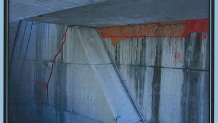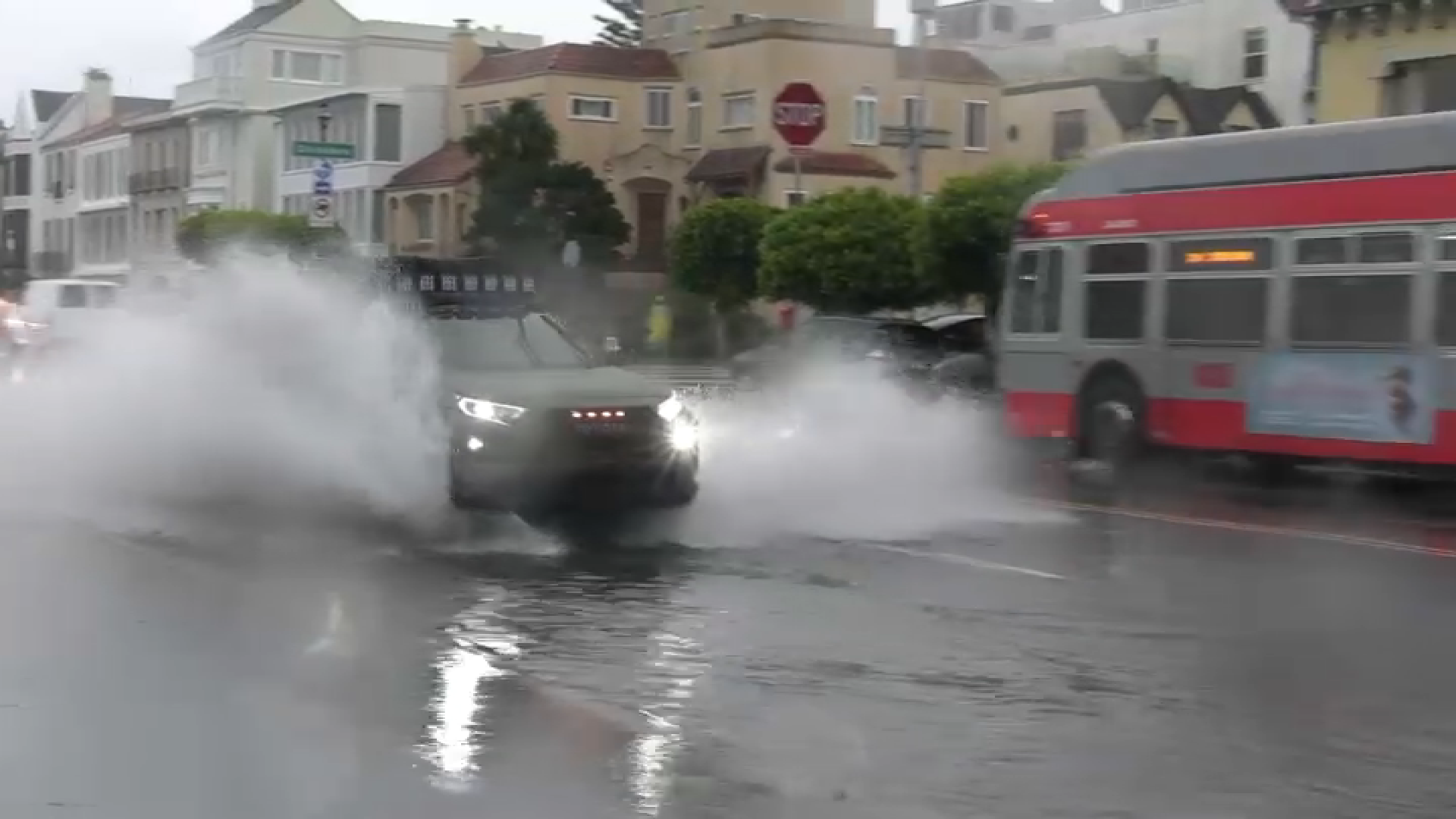An NBC Bay Area examination of 20 years’ worth of Federal Energy Regulatory Commission (FERC) and California Division of Safety of Dams (DSOD) inspection reports, engineering studies, Federal Part 12D independent consultant inspection reports, consultant letters and memos—nearly 10,000 pages of documents in all—repeatedly identified problems with the stability, safety and monitoring of Oroville Dam.
These issues raise concern among seven engineers who reviewed the materials at NBC Bay Area’s request. Several of those engineers, who asked to remain anonymous, currently work in structural engineering, including the design, monitoring and review of dams. One engineer served on the National Dam Safety Review Board.
All of the engineers told NBC Bay Area that the documents they reviewed raise serious safety concerns that they say must be addressed sooner rather than later or risk failure of Oroville Dam itself.
Among the issues are:
- A 15-foot-long crack in the concrete at gate eight in the dam’s headworks, or flood control structure, which records show appears to be growing
- Spalling, or deterioration, of concrete in other areas of the dam
- Cracking tendons, or trunnion rods, that help move the 20-ton radial gates, which control the flow of water through the dam
- Failure of the Department of Water Resources to develop a long-term plan to monitor the amount and speed of water that naturally flows through the earthen dam, despite a request by federal inspectors to do so
For many of the engineers, that last issue is the most troubling problem. In a 2010 report, federal inspectors ordered the California Department of Water Resources (DWR) to “establish a long-term plan to monitor the flow” of water through the earthen dam—what’s known as the phreatic surface. This issue subsequently appears as the top priority to be addressed in the past five years of DSOD inspection reports, yet DWR has, thus far, failed to create such a plan.
Local
According to the structural engineers who specialize in dam design, construction and safety, if the phreatic surface comes out at the wrong place and the wrong speed, it could erode the structure from the inside, and if enough force is created, it could wash away the entire dam.
“It tells me we got a problem. It tells me that we're lucky that it hasn't manifested itself to a great problem and a crisis,” said Don Colson, a former engineer at DWR who worked on the State Water Project and its dams before retiring twenty years ago. “Is this a case of a denial, absent minded management, or what? They don’t know what to do.”
Colson worked on many facilities, including the Oroville Dam and its spillway during his long tenure with the agency.
In February, the spillway at Oroville Dam collapsed after heavy winter rains, forcing the nearly 200,000 residents living below the dam to evacuate their homes. At 770 feet, the Oroville Dam is the nation's tallest dam. The dam holds back the more thatn 3.5 million acre feet of water in Lake Oroville. That water is runoff collected from the Sierra Nevada.
If it were to fail, the dam could flood Sacramento and areas as far south as the East Bay. Such flooding could knock out nearby levees and impact the drinking water for the Bay Area.
Pointing to both the February spillway collapse and the documents NBC Bay Area’s Investigative Unit asked him to review, Colson said Oroville Dam is already in trouble in his mind.
“I think it has failed,” Colson said of the many structural issues discussed in the documents. “It just hasn't collapsed.”
But DWR’s deputy director, Joel Ledesma, said the state does have a monitoring plan.
“We have a very good seepage monitoring system already, and in our opinion it's reliable. It's good. It would catch any leak,” he said.
Ledesma, who oversees the entire California State Water Project, admitted that the current plan does not satisfy federal inspectors, which is why it is continually listed as a top priority for DWR to address in all state and federal inspection reports filed since 2013.
Ledesma said DWR will work with FERC and DSOD to develop a more comprehensive plan. “Obviously [they] want us to improve that,” he said.
But Ledesma could not provide an explanation for why it’s taken the department so long to make those improvements.
“I don't have an answer for that,” he said.
Colson believes a spot on the face of the dam where heavy vegetation grows could be a sign the phreatic surface is already leaking internally through the face of the dam.
“That is terrifying, that wetness,” Colson said. “Designers never want water like that rolling through their dam,” he added.
In a recent report, DWR maintains the so-called “wet spot” is not a safety concern.
Ledesma says it’s not a leak. “It was there before there was water behind the dam,” he said. Ledesma pointed to DWR reports from around time the Oroville Dam was constructed nearly fifty years ago that note a green patch on the face of the dam.
“The seepage on this earthen dam is one of the lowest in the world, and it has not changed since the dam was built,” Ledesma added. “So we're pretty confident the dam is safe.”
Over the course of the six-month investigation, the NBC Bay Area Investigative Unit spoke with two retired DWR insiders. The former employees, both engineers by trade, asked to be called by different names because they’re worried they could lose their pensions after speaking out publicly about what they say are serious problems at Oroville Dam. Both men recently retired from the department and say they were already aware of the issues found repeatedly in the inspection reports.
One man asked to be called “Mark.” The other asked to be called “Tony.”
“They're not addressing issues that have been pointed out and documented in previous Division of Safety of Dams inspection reports,” said Mark, who worked within DWR as a high-level administrator. Mark also worked as a field engineer on the State Water Project, of which Oroville Dam is a key component.
“My driving force [for speaking out] is out of concern for the public,” he said.
The other retired DWR engineer, Tony, says DWR’s delayed response to these issues may be due in large part to the agency’s culture.
“They have a tendency to try to reduce their maintenance costs by trying to do things themselves and not getting adequate technical help,” he said.
Tony says that approach could lead to another failure, like the spillway collapse in February, but he worries this time it would be worse.
“Here you'll have a catastrophic structural failure that's not going to allow you to operate the facility the way it's supposed to,” he said.
In response to all of these concerns, DWR officials maintain the dam is safe.
“There’s nothing that says it’s not safe,” Ledesma said.
Ledesma was at the Oroville Dam in February as its spillway collapsed, helping to make decisions and call the shots.
He admitted that things became very tense in the room where decision-makers gathered, but he said decisions about how much water was released and use of the dam’s water release system, including the emergency spillway, were all appropriate and necessary. He said the right decisions were made in order to preserve what was left of the damaged main spillway and the earthen dam structure itself.
“We lose that [the main spillway] completely and it [the water release] is uncontrolled,” Ledesma said. “We knew that that [loss of the entire spillway system] was a problem not only for public safety but the environment itself and the dam structure.”
Another major point of concern that engineers point to as problematic is a roughly 15-foot-long crack on the concrete at gate eight of the spillway headworks. Inspectors have been monitoring the crack with red spray paint, and a report from February 2015 indicates the crack appeared to have grown in length and needed to be addressed immediately.
“Cracks like that could really weaken the structure to the point where you could lead to a failure,” said “Tony,” the recently retired DWR engineer.
Colson was more blunt about what that crack might mean when the NBC Bay Area Investigative Unit showed him pictures found in several inspection reports.
“This really bothers me,” Colson said. “I think we could debate [its merits]. I really believe that it's a function of the trunnion anchorages putting stress and causing tension. The interior gates, they’re all balanced. But, that end one [gate eight], on both ends is asymmetry, not balance. So there's a twist. When you get a crack like this that’s growing. You don't know what it is.”

But DWR’s Ledesma says his engineers do know what it is. When asked specifically about the inspection report that noted growth in the crack, he said it was “probably a miscommunication.” Ledesma says his own conversations with the agency’s dam engineers indicate the crack—what he calls a “stress crack” that occurs when concrete is poured—has not grown.
“It’s not changing and it's not posing any risk to the structure,” he said.
Independent engineers who spoke to NBC Bay Area also point to another concern: cracks in the trunnion rods, or tendons that support the flood control gates. Initial tests conducted back in 2000 and repeated several times since then show 28 of the 384 trunnion rods used to operate the eight flood control gates, or 14 percent, have cracks of 1/32 of an inch or bigger. Six of those cracks are larger than 1/16 of an inch.
Both DWR insiders and external experts say that more precise and comprehensive tests of these cracks are necessary to better understand the issue.
The problem is something the agency has been monitoring for nearly two decades, says DWR insider “Tony.”
“Back ten-fifteen years ago when we were looking at it, these bolts were cracking and failing,” he said. “If this gate fails you're not going to be able to control the releases out of Oroville.”
Colson agrees.
“We're lucky that it hasn't manifested itself into a great problem and a crisis,” he said.
DWR’s Ledesma says the rods aren’t showing any signs of problems.
“All the testing we've done shows that they can still safely handle the load of the work, which means they still have life in them,” he said. “But we acknowledge we need to look into the future and they will have to be replaced at some point.”
Even with his insistence that the dam itself is safe, Ledesma stressed that the spillway failure in February was a wake-up call for his department and its approach to dam safety.
“The thing that this event keeps telling us is we need to keep changing. We need to keep understanding,” he said.
Ledesma says the agency has reached out to DSOD and FERC to take a comprehensive look at the entire dam to assess overall safety and better prepare for future winter storms.
In the meantime, Ledesma says priority number one is finishing spillway construction before the rainy season begins again.
“It's not that that we're not taking on all these items,” he said. “It's that we're prioritizing based on risk, and we're working our way through that list.”



